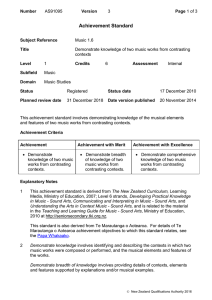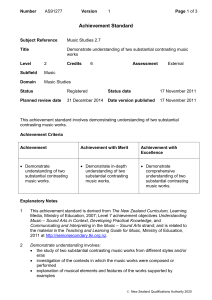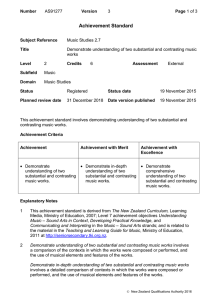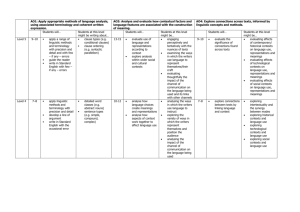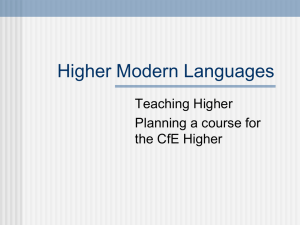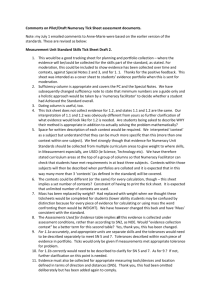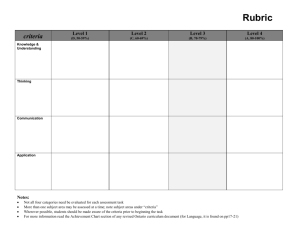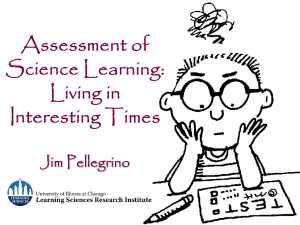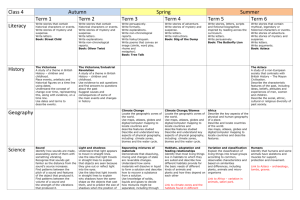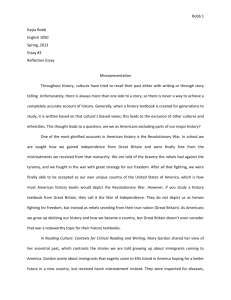91095 Demonstrate knowledge of two music works from
advertisement
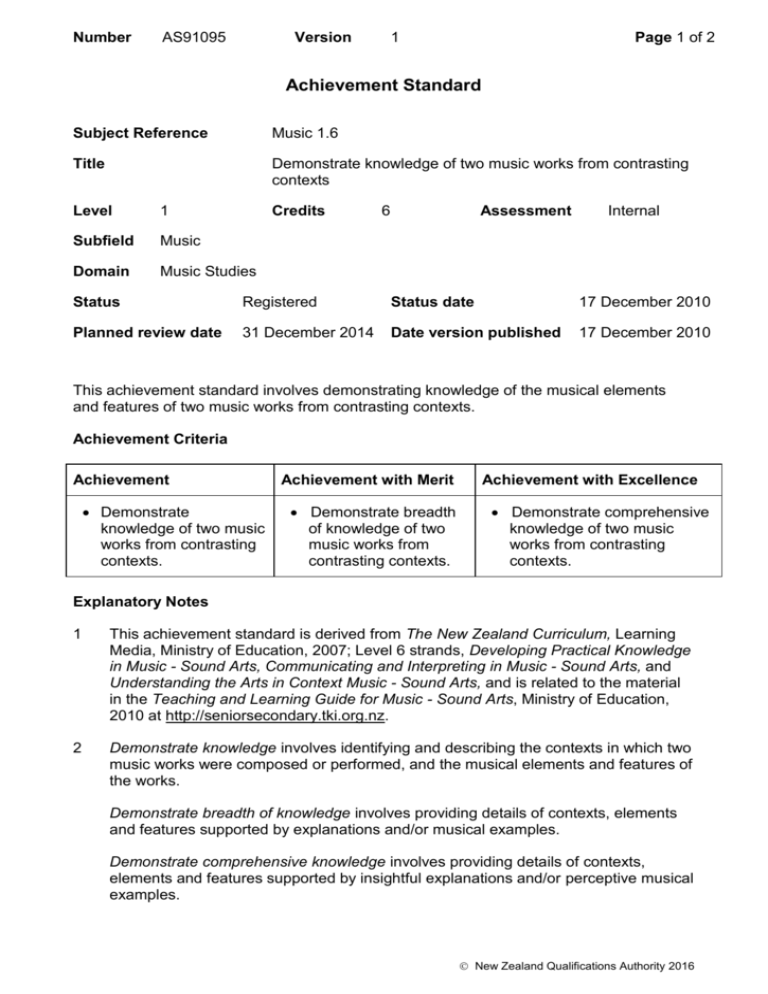
Number AS91095 Version 1 Page 1 of 2 Achievement Standard Subject Reference Music 1.6 Title Demonstrate knowledge of two music works from contrasting contexts Level 1 Credits Subfield Music Domain Music Studies 6 Assessment Internal Status Registered Status date 17 December 2010 Planned review date 31 December 2014 Date version published 17 December 2010 This achievement standard involves demonstrating knowledge of the musical elements and features of two music works from contrasting contexts. Achievement Criteria Achievement Demonstrate knowledge of two music works from contrasting contexts. Achievement with Merit Demonstrate breadth of knowledge of two music works from contrasting contexts. Achievement with Excellence Demonstrate comprehensive knowledge of two music works from contrasting contexts. Explanatory Notes 1 This achievement standard is derived from The New Zealand Curriculum, Learning Media, Ministry of Education, 2007; Level 6 strands, Developing Practical Knowledge in Music - Sound Arts, Communicating and Interpreting in Music - Sound Arts, and Understanding the Arts in Context Music - Sound Arts, and is related to the material in the Teaching and Learning Guide for Music - Sound Arts, Ministry of Education, 2010 at http://seniorsecondary.tki.org.nz. 2 Demonstrate knowledge involves identifying and describing the contexts in which two music works were composed or performed, and the musical elements and features of the works. Demonstrate breadth of knowledge involves providing details of contexts, elements and features supported by explanations and/or musical examples. Demonstrate comprehensive knowledge involves providing details of contexts, elements and features supported by insightful explanations and/or perceptive musical examples. New Zealand Qualifications Authority 2016 Number AS91095 Version 1 Page 2 of 2 Contrasting contexts refer to the: historical, social and/or cultural contexts in which the work was composed and/or performed eg medieval, renaissance, baroque, classical, romantic, twentieth or twenty-first century ‘art’ music, popular, rock, jazz, musical theatre, music for film, music of the tangata whenua (traditional), music of other cultures composer(s) and/or performer(s) associated with the works purpose and/or function (eg commissioned works, film music, whakapapa (genealogical narrative)). 3 Musical elements and features refer to: elements (eg timbre, texture, form) compositional devices (eg motif, riff, repetition, sequence) performance practices (eg articulation, call and response, improvisation) sound production technologies (eg delay, EQ, sound properties of acoustic instruments/taonga pūoro) notation/transmission conventions (eg graphic score, figured bass, jazz/rock chord symbols, oral narrative). The score of at least one work must be analysed. Score refers to a conventionally notated score, lead sheet, TAB, or graphic notation. 4 Evidence for assessment may take one or more of the following forms – written, static display, PowerPoint, seminar, annotated scores. 5 Traditional forms of Māori music may be used for assessment against this standard. 6 The assessment criteria must be applied to provide an overall judgment based on the weight of evidence across the study of both music works. 7 Conditions of Assessment related to this achievement standard can be found at www.tki.org.nz/e/community/ncea/conditions-assessment.php. Replacement Information This achievement standard replaced unit standard 10660 and AS90017. Quality Assurance 1 Providers and Industry Training Organisations must be accredited by NZQA before they can register credits from assessment against achievement standards. 2 Accredited providers and Industry Training Organisations assessing against achievement standards must engage with the moderation system that applies to those achievement standards. Accreditation and Moderation Action Plan (AMAP) reference 0233 New Zealand Qualifications Authority 2016
